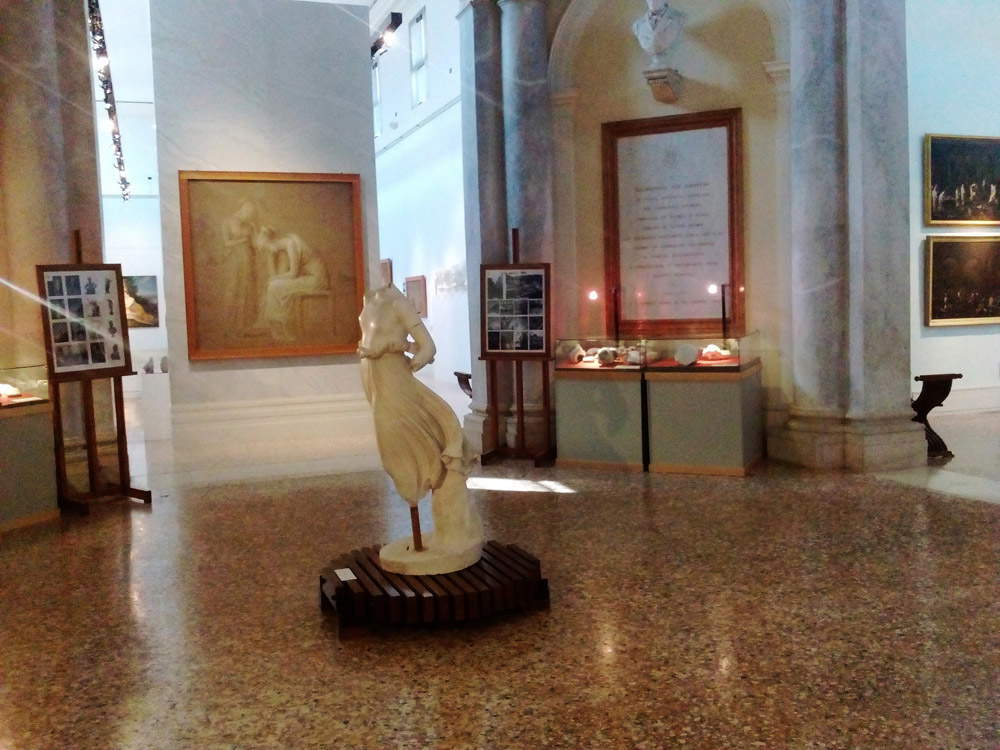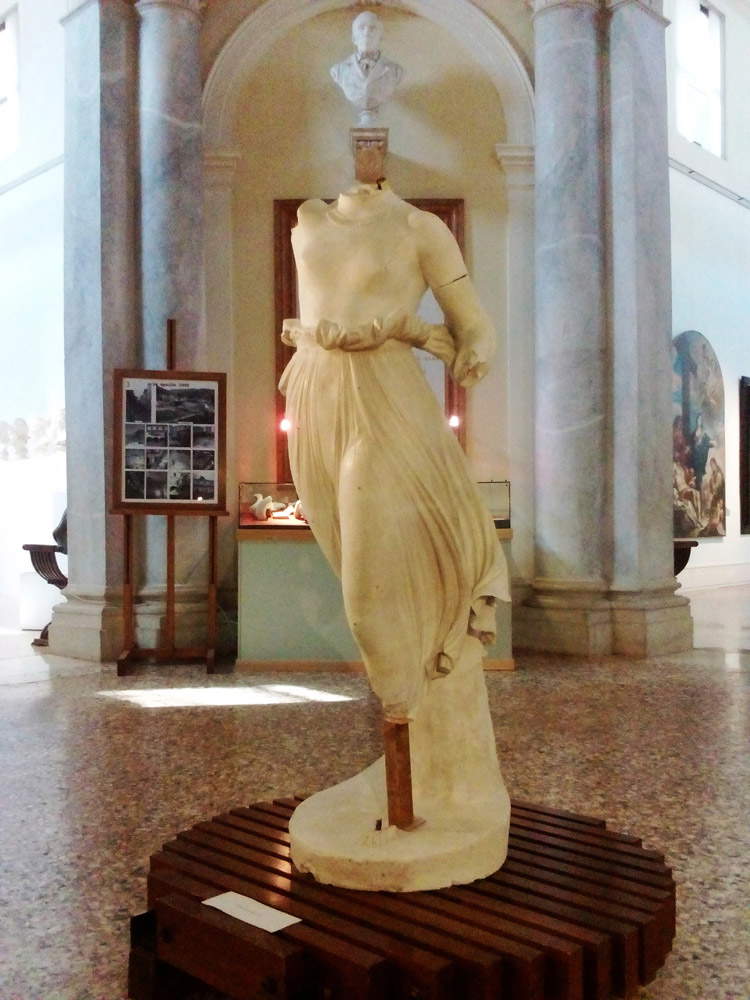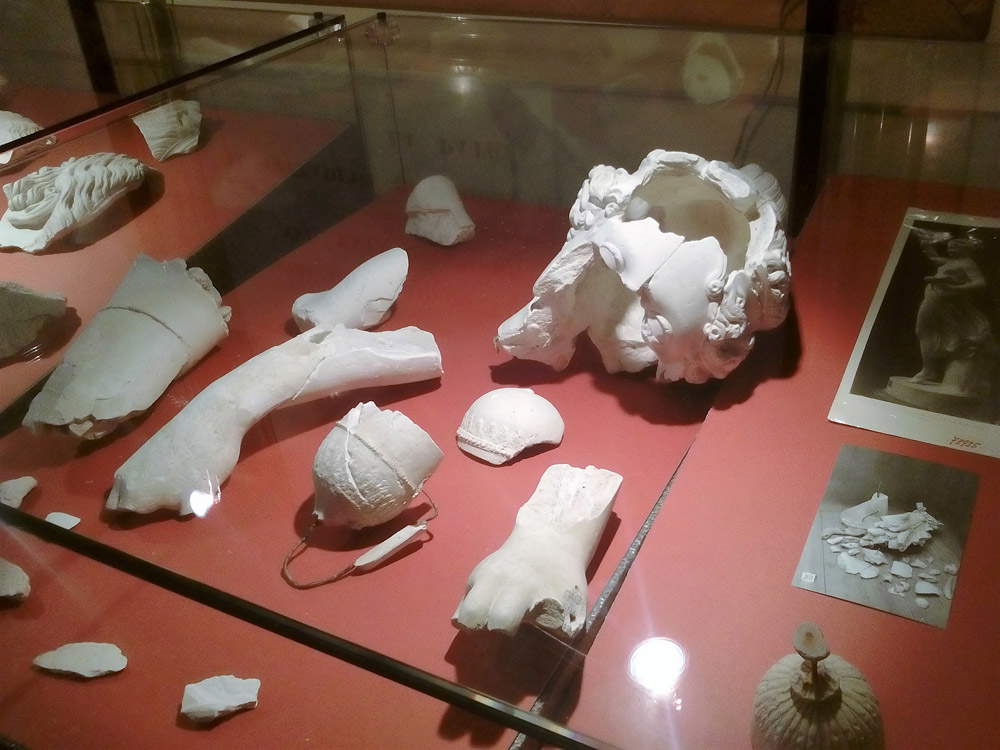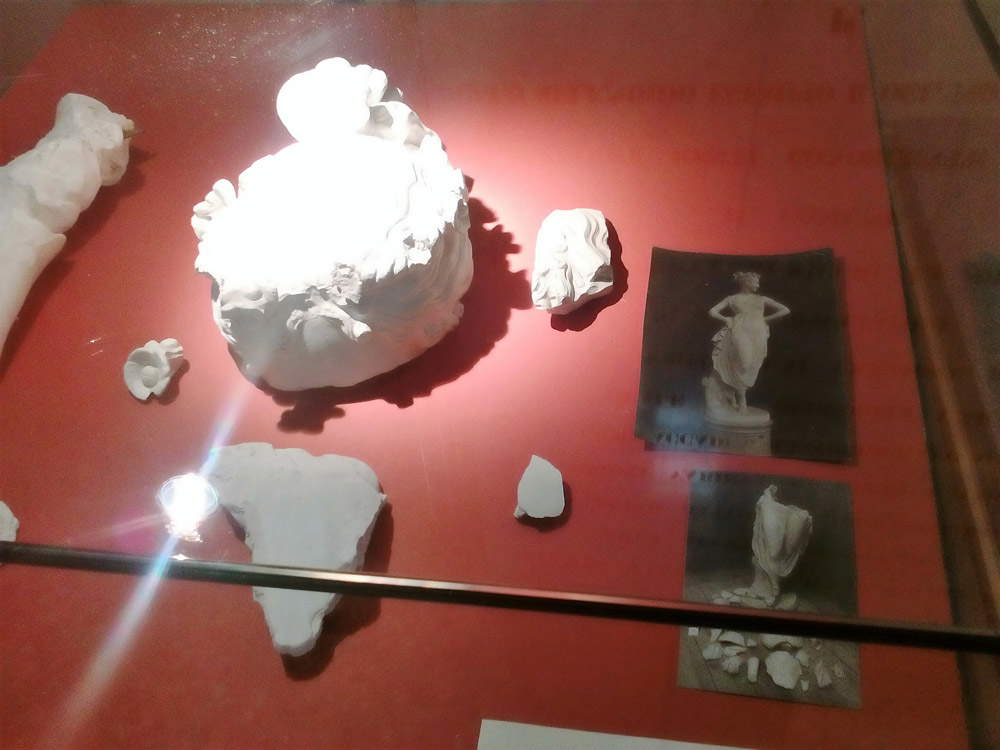Unseen Canova: in Bassano, an exhibition for reflection
In Bassano del Grappa, the exhibition La Musa mutilata brings out of museum storage a series of damaged and as yet unrestored plaster sculptures by Antonio Canova, and invites reflection precisely on restoration and all those measures that could be taken to ensure the enjoyment of art. The works on display came to the museum thanks to the bequest of Canova’s half-brother, Monsignor Giambattista Sartori Canova, and were displayed in two rooms on either side of the cloister; after they were damaged by a bombing that involved the entire city on April 24, 1945, they were moved to the museum’s storage room, remaining unchanged. They are now temporarily in the central hall of the Bassano museum where they can be admired until Aug. 28.
The small exhibition was organized by the Bassano museum on the occasion of the 70th International Museum Day held on May 18 adhering to the proposal ofICOM Museums and Controversial Stories. Telling the Untold in Museums. An unprecedented exhibition to tell the story of what cannot be seen but is there and is part of everyday museum reality.
Prominent among the works is certainly in the center of the room Hebe, a sculpture mutilated of head, legs and one arm but which nevertheless enchants for the grace and delicacy with which the drapery of the robe has been rendered. And then a bust of Napoleon, and several display cases containing pieces of faces, necks and hair from other works by the famous Venetian sculptor. In addition to the exhibits, there are also photographs in the display panels showing the works before and after damage and some of the studies conducted for the restoration. Pieces that, in their raw state, are reminiscent of a disastrous war event of the past and also allude to the consequences that are unfortunately always there after any catastrophe. An exhibition not to forget. However, an exhibition that also looks to the future and leads to reflection. As the director of the civic museum Chiara Casarin declares: The exhibition is intended not only as an invitation to the visitor to expand on a theme that refers back to the history and memories of Bassano del Grappa, but wants to increase a sensitivity to complex museum issues such as restoration and preservation, revealing what is usually taken away from fruition and therefore, very often, remains unpublished.
A curious exhibition, an exhibition of unrestored works. Unseen and important because of the always topical theme, that of restoration as a means of recovering and showing an asset and transmitting its values. When Cesare Brandi in his work Theory of Restoration (1963) gave a definition of it, he emphasized how it concerns aesthetics and history with a view to transmission to the future. And Brandi’s is an ever relevant definition; we restore in order not to forget the past and because without it we cannot know the present and the future. Becoming aware of what has been helps us to know our history and our identity is fundamental to moving forward and to maintain and continue to bring our heritage to life.
 |
| The Mutilated Muse exhibition at the Bassano Civic Museums. |
 |
| Antonio Canova, Hebe (early 19th century; plaster, height 165 cm; Bassano del Grappa, Musei Civici) |
 |
| Fragments of Hebe |
 |
| Antonio Canova’s Dancer before and after damage |
 |
| Fragments of the Dancer |
Warning: the translation into English of the original Italian article was created using automatic tools. We undertake to review all articles, but we do not guarantee the total absence of inaccuracies in the translation due to the program. You can find the original by clicking on the ITA button. If you find any mistake,please contact us.




























